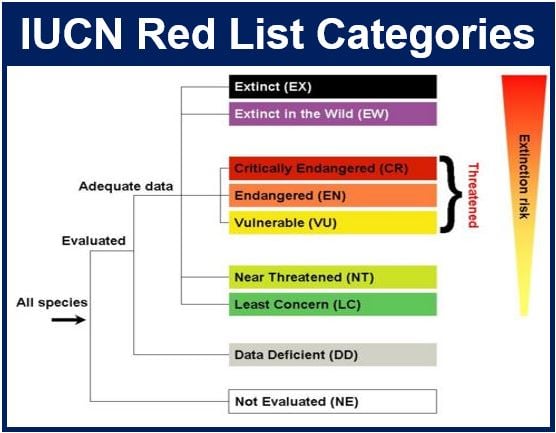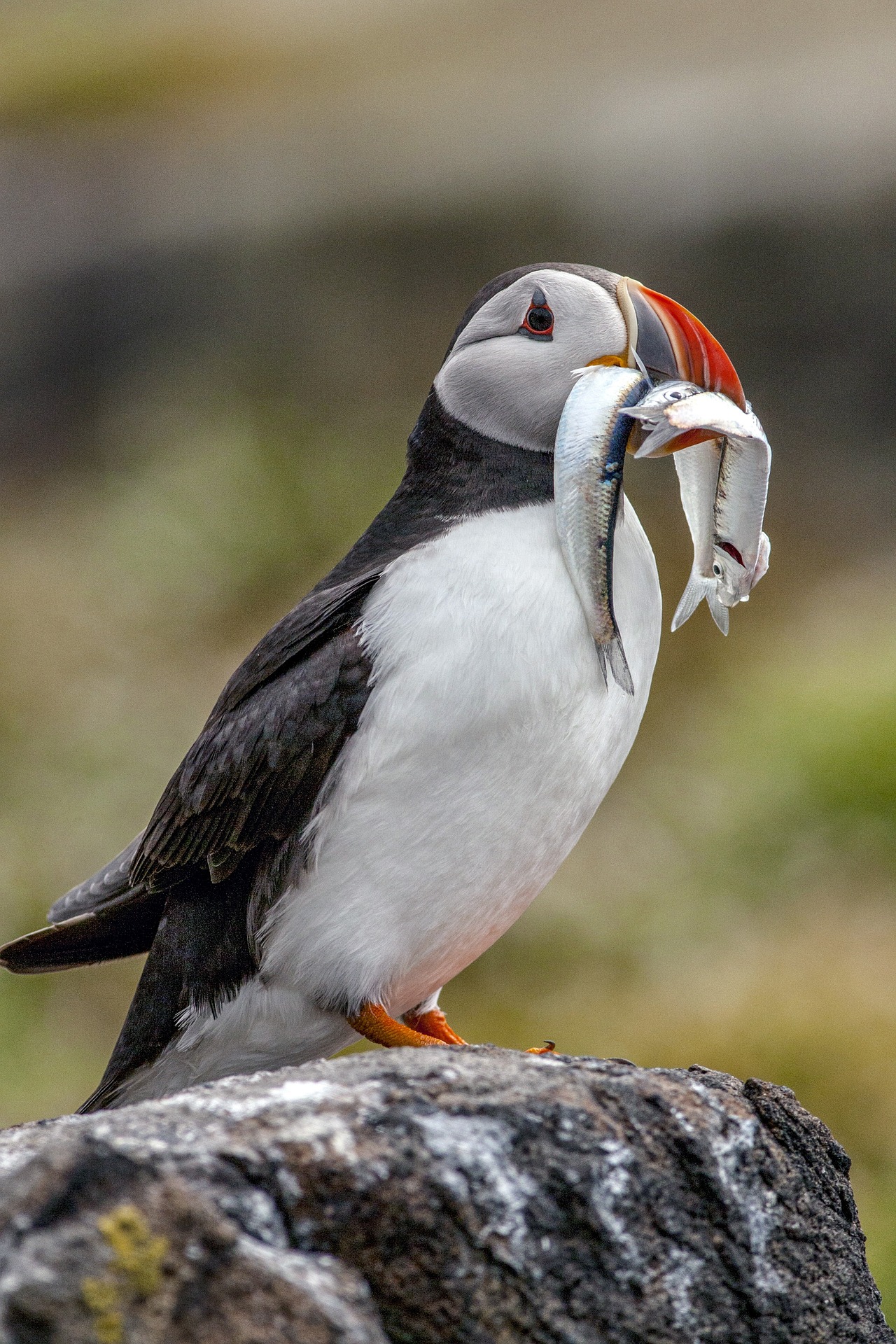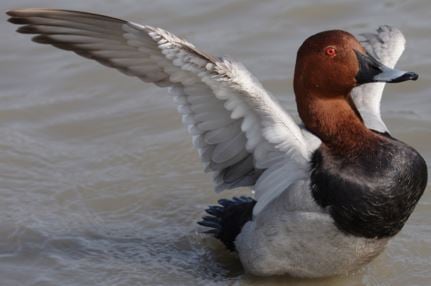Four of Britain’s bird species – the puffin, turtle dove, grebe, and pochard – have been added to the rapidly growing list of birds facing the risk of global extinction, the RSPB (Royal Society for the Protection of Birds) informed on Thursday.
The latest annual update on the IUCN (International Union for Conservation of Nature), which BirdLife International has announced on IUCN’s behalf, means the number of British bird species considered to be facing the risk of extinction has doubled to eight.
Alarmingly, an additional 14 British species are now classed as ‘Near Threatened’, i.e. any further deterioration in their status could see them at risk of extinction too.
 The IUCN Red List provides a scientifically objective way of assessing species in terms of their risk of extinction. (Image: birdlife.org)
The IUCN Red List provides a scientifically objective way of assessing species in terms of their risk of extinction. (Image: birdlife.org)
The RSPB’s Conservation Director, Martin Harper, said:
“Today’s announcement means that the global wave of extinction is now lapping at our shores. The number of species facing extinction has always been highest in the tropics, particularly on small islands. But now the crisis is beginning to exact an increasingly heavy toll on temperate regions too, such as Europe.”
“The erosion of the UK’s wildlife is staggering and this is reinforced when you talk about puffin and turtle dove now facing the same level of extinction threat as African elephant and lion, and being more endangered than the humpback whale.”
The status of African vultures deteriorates
Several species of African vultures have been added to the list of ‘Critically Endangered’ animals following this global revision. ‘Critically Endangered’ is one step below ‘Facing Global Extinction’.
African vultures, which face persecution, are regularly poisoned or trapped.

The Atlantic puffin (Fratercula arctica), is also known as the common puffin. Used as a symbol for books and other items, this clown among seabirds is one of the world’s favourite birds.
Among the list of changes among British birds in this year’s red list, a number of themes emerge, including:
- Seabirds: a deterioration in the fortune of several species, including puffin and razorbill.
- Wading birds: an ongoing and increasingly intense threat to lapwing, knot, oystercatcher, curlew, and godwits.
- Marine ducks: a deterioration in the status of the common eider, which joins the long-tailed duck and velvet scoter as species of concern.
 The gentle purr of the turtle dove (Streptopelia turtur) is an evocative sound of summer but has become increasingly rare following rapid and sustained population declines. (Image: RSPB)
The gentle purr of the turtle dove (Streptopelia turtur) is an evocative sound of summer but has become increasingly rare following rapid and sustained population declines. (Image: RSPB)
Some of this year’s changes in more detail
Turtle Dove: formerly a familiar visitor to most of Europe, including south-east England. Populations across Europe have declined by more than 30% over the last 16 years. Its status has moved from Least Concern to Vulnerable.
Researchers from BirdLife International partners and the RSPB are trying to determine the reasons for the decline in the UK and Europe.
Since the 1970s, the turtle dove population in the UK has dropped by over 90%.
 The common pochard (Aythya ferina) is a medium-sized diving duck.
The common pochard (Aythya ferina) is a medium-sized diving duck.
Atlantic Puffin: although its global population is still in the millions, breeding failures at some key colonies in recent years have been alarmingly high. The number of young birds being recruited into the breeding population has plummeted.
Puffin populations have declined significantly in Norway, the Faroe Islands, and Iceland, which together hold four-firths of the European population.
In the UK, populations have declined considerably in the Shetland Islands and Fair Isle. The seabird, however, appears to be doing well in other parts of the country.
Slavonian Grebe: this species occurs across northern Europe, northern Asia, and North America. In North America, where the bulk of this waterbird’s population occurs, numbers have declined significantly. It has now been included on the list of species evaluated as Vulnerable.
In Britain, Slovanian grebes only nest in the Scottish Highlands, where numbers have declined. However, those wintering along the UK’s coasts have increased.
Pochard: this species occurs widely across Asia and Europe. Its population has declined considerably in Europe in recent years. Experts say this deterioration is set to continue. Worldwide, it has been uplisted to Vulnerable.
 The Slavonian grebe (Podiceps auritus), also known as the horned grebe, is arguably the most attractive of the UK’s breeding grebes, with its golden ear tufts and trilling calls.
The Slavonian grebe (Podiceps auritus), also known as the horned grebe, is arguably the most attractive of the UK’s breeding grebes, with its golden ear tufts and trilling calls.
The number of nesting pochard and wintering individuals has declined markedly in the UK.
The addition of the lapwing, oystercatcher, bar-tailed godwit, knot, and curlew sandpiper to the status of New Threatened Species is troubling for the list of UK and European wading birds.
Some good news
Although alarming, this year’s update does not all come with bad news. The Seychelles warbler, once one of the rarest songbirds in the world, is making a comeback. In 1968, its population declined to just 26 birds. In 2014, reports suggested there were 2,800 of them.
The Seychelles warbler’s status has been downlisted to Near Threatened from Vulnerable.
The RSPB’s Head of Reserves and Protected Areas, Gwyn Williams, said:
“Today’s assessment is a warning that nature is in trouble, but with funding and the right conservation measures threatened species can recover.”
Video – What is IUCN?
The IUCN (International Union for Conservation of Nature) is the world’s largest global environmental network. It operates in more than 160 countries, gathering the latest knowledge on biodiversity, running hundreds of conservation projects around the world, and being nature’s voice on the international stage.
